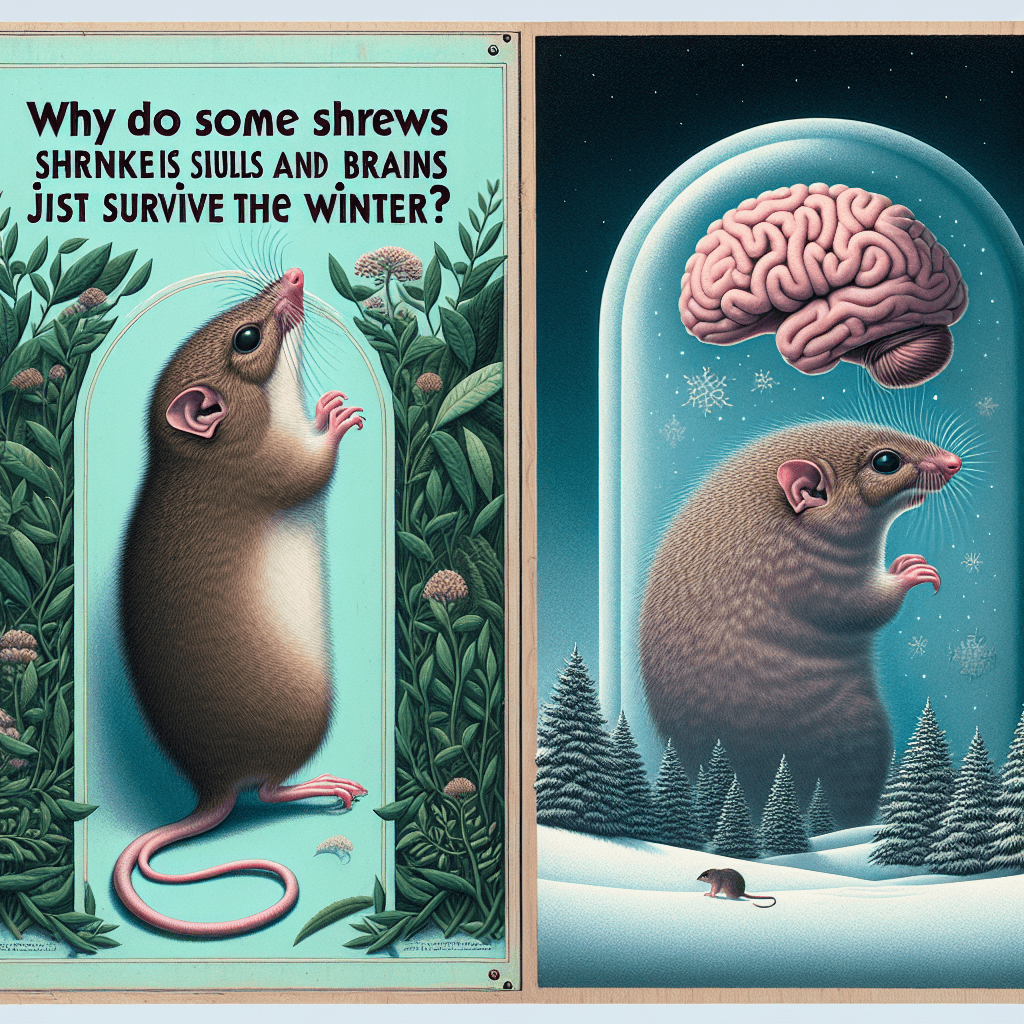Why do some shrews shrink their own skulls and brains just to survive the winter
To survive the brutal scarcity of winter, some shrews resort to a mind-bending tactic: they literally shrink their own skulls and brains just to stay alive.


Too Long; Didn't Read
TLDR: Shrews shrink their energy-hungry brains and skulls to drastically reduce their metabolism, helping them conserve calories and survive the winter when food is scarce.
The Incredible Shrinking Shrew: Why Do Some Shrews Shrink Their Own Skulls and Brains to Survive the Winter?
Imagine if, to save on your heating and grocery bills this winter, you could shrink your own head. It sounds like something from a science fiction movie, but for some of the world's smallest mammals, this bizarre reality is the key to survival. The common shrew, a tiny, high-energy predator, undergoes one of nature's most extreme transformations every year: it shrinks its own brain and skull to make it through the cold, lean months. This blog post will delve into the incredible biology behind this phenomenon, exploring how and why these minuscule mammals perform such a remarkable feat.
What is the Dehnel Phenomenon?
This fascinating biological process is known as the Dehnel phenomenon, named after the Polish zoologist August Dehnel who first described it in the 1940s. He observed that shrews captured in the winter were consistently smaller than those caught in the summer, not just in body weight, but in the actual size of their skulls. For decades, scientists believed this was simply due to larger shrews dying off in the winter, leaving a smaller population. However, modern research has confirmed Dehnel's more radical hypothesis: individual shrews actively shrink and then regrow major parts of their bodies.
The scale of this change is staggering. A shrew's brain can shrink by 20% to 30% in volume as winter approaches. To accommodate this, its skull case reduces in height by up to 15%. This isn't just dehydration; it's a structural overhaul of bone and tissue that is then reversed in the spring.
The "Why": An Extreme Energy-Saving Strategy
The driving force behind this incredible transformation is energy conservation. Shrews live life in the fast lane with one of the highest metabolisms in the animal kingdom. To fuel their tiny bodies, they must eat every few hours, consuming up to 125% of their body weight each day. A few hours without food can mean starvation.
Winter poses a two-fold threat:
- Less Food: Their primary food source—insects, worms, and spiders—becomes scarce and harder to find under snow and frozen ground.
- More Energy Needed: The cold temperatures require the shrew to burn even more calories just to stay warm.
The brain is an incredibly "expensive" organ to run, consuming a disproportionate amount of the body's energy. By shrinking the brain, along with other high-energy organs like the liver and heart, the shrew dramatically lowers its overall energy requirements. This reduction allows it to survive on the limited food available during winter. It is a high-stakes evolutionary gamble—sacrificing brainpower for survival.
The "How": A Reversible Biological Marvel
So, how does a shrew actually shrink its head? The process is a masterpiece of biological engineering.
First, the skull itself is downsized. Researchers at institutions like the Max Planck Institute for Ornithology have shown that bone tissue is absorbed along the cranial sutures (the fibrous joints connecting the bones of the skull). Specialized cells essentially dissolve and reabsorb the bone material, causing the brain case to shrink.
Simultaneously, the brain reduces in size. This isn't just a loss of water; the actual volume of white and grey matter decreases. The shrew's body breaks down and absorbs parts of its own brain tissue, reducing the number of cells that require energy. While the exact cognitive impact is still being studied, it's clear the shrew prioritizes core survival functions over less critical cognitive abilities.
Perhaps the most amazing part is that this is all reversible. As spring arrives and food becomes plentiful again, the shrew’s body kicks into reverse. The skull expands as bone tissue is redeposited, and the brain regrows to its former size, ready for the breeding season.
Conclusion
The shrew's ability to shrink and regrow its own skull and brain is a profound example of nature's ingenuity. The Dehnel phenomenon is not just a biological curiosity; it is a critical survival mechanism forged by the intense pressure of seasonal change. By making the ultimate sacrifice—reducing the very organ that controls its body—this tiny mammal ensures it can live to see another spring. This remarkable adaptation serves as a powerful reminder that in the unforgiving wilderness, survival sometimes requires the most radical and seemingly impossible solutions. It also highlights how much we still have to learn from the incredible animals with which we share our planet.


